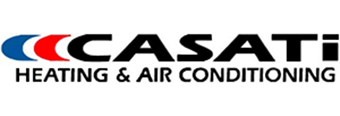Do you suffer from seasonal allergy symptoms that prevent you from enjoying your time outdoors, and sometimes even indoors?
Well, you’re not alone. It’s estimated that approximately 10 million Canadians suffer from seasonal allergy symptoms (according to the Johnson & Johnson Vision Care Inc. survey results, May 23, 2012). Furthermore, apparently Toronto rates #2 out of the 6 worst Canadian cities suffering from seasonal allergies (predominantly from Hay Fever).
We’ve just entered the month of July, and some of you might be wondering why you’re still feeling the effects of outdoor allergies. Shouldn’t the worst of spring allergies be over by now? Well, often times, NO.
Contrary to common belief, spring and autumn are not the only times of the year that people can experience seasonal allergy symptoms. Some people are also affected in the summer and, believe it or not, during the winter months.
Summer allergy symptoms can feel similar to the common cold or flu, especially if they’re accompanied by a mild fever. In extreme cases, they can lead to an asthma attack or even to infections caused by persistent and severe irritation (i.e. in the eyes, throat, or on the skin). It’s always a good idea to consult with a medical practitioner when symptoms persist longer than 10 days.
The most common allergy symptoms:
- itchy, puffy and/or watery eyes
- congested sinuses – runny nose, sneezing, shortness of breath, difficulty breathing and shortness of breath
- wheezing, irritated and inflamed throat, chronic cough
- itchy skin, hives
- fever
What is possibly responsible for your continued discomfort?
| MONTH | POTENTIAL AIRBORNE ALLERGENS |
| January | Indoor house dust, dust mites, pet dander, mold |
| February | Tree pollen (in some areas); Indoor house dust, dust mites, pet dander, mold |
| March | Tree pollen (in some areas); Indoor house dust, dust mites, pet dander, mold |
| April | Tree & Flower Pollen |
| May | Tree Pollen (significant), flower, grass & weed pollen |
| June | Grass and Weed Pollen (significant) |
| July | Grass, Weed Pollen (significant); Fungus spores & Seeds (significant); Mold Spores; Air Pollution and Smog (clouds of ozone); |
| August | Ragweed; Air Pollution and Smog (clouds of ozone); Mold Spores (significant) |
| September | Ragweed (significant); |
| October | Ragweed |
| November | Ragweed; Mold Spores; |
| December | Indoor mold spores (incl. from indoor branches of live pine trees) |
5 WAYS TO ALLEVIATE SEASONAL ALLERGY SYMPTOMS:
Various outdoor and indoor airborne particulates contribute to allergic reactions. Everybody is different; however, there are some common irritants to be prepared for or steer away from as much as you can.
Invest in a quality air filter and purifier
An air purifying system can capture and purify airborne allergens, including pollen carried into your home from outside . Some air purifiers help prevent the spread of colds and flus, assisting to alleviate allergy and asthma symptoms caused by dust mites, pet dander, mold, fungi, bacteria and viruses.
Furnace Air Filter
In addition to the above, maintaining your furnace and the air filter ensures that airborne particles are captured and your furnace functions at optimal capacity. If your furnace air filter is 1″ in thickness, consider having a larger filter system installed (which fits a 4″ or 5″ filter).
House Plants
You can also use house plants as natural for natural air filtration throughout your home (read 7 household plants that clean the air of harmful toxins). Varying types of plants assist in removing different types of toxins, mold and allergens, including excessive dampness/humidity. Certain plants (i.e. Boston Fern, Aloe Vera, Daisy) can be placed in specific rooms such as bathrooms, laundry rooms and kitchens.
Car Air Filter
Consider using an air filter in your car if you drive a lot. Keep your car clean on the inside – this includes vacuuming and using a mixture of water with white vinegar to wash the windows, dashboard and floor mats. Avoid chemical air fresheners that can further irritate your allergy.
All-Season House Cleaning
Doing a thorough cleaning of your home need not only be reserved for Spring time. As much as it may feel like a hassle, there are several benefits to cleaning your entire home all year round, or at least bi-annually (including Autumn). Your well-being and home comfort is worth it!
When embarking on some serious home cleaning, make sure you’re prepared. Wear gloves, a face mask and any other safety equipment necessary to prevent any harmful exposure and serious adverse reactions.
Here’s what you can do:
- annual furnace, air conditioner and fireplace maintenance and cleaning
- de-clutter and “dust-off” top and underneath furniture, shelves
- de-grime your stove vent filters
- wash your window curtains and dust off blinds
- clean any mildewed plastic shower curtain liners
- wash your bed sheets weekly in hot water (ensure they are completely dry before placing back on your bed)
- vacuum with HEPA filter (use a mask over nose/mouth if necessary)
- mop floors weekly (use a mask over nose/mouth if necessary)
- clean the bathroom fan(s)
- safely remove any indoor mold (in bathrooms, basement, laundry washer, dishwasher, refrigerator pans, air conditioning coil, indoor water fountain). If the mold in your home has reached an uncontrollable level or if you’re uncertain about the type of mold, it’s best you consult with a professional company to remove the mold for you
- have your home ducts professionally cleaned
- In the early mornings and weather-permitting (not too hot, humid or windy), open your windows to circulate fresh air in your home.
Plan ahead: Check the pollen counts in your area
If you’re an allergy sufferer, it is helpful to be aware of the pollen and mold counts in your environment. There are several online resources that offer pollen counts, weather forecasts and humidity levels for most locations. I often check the 3-day Pollen Outlook at The Weather Network Toronto, to be better informed.
Here’s what you can do on especially hot and humid days:
- Turn on your air conditioner to remove the humidity from the air
- Avoid participating in outdoor activities, including gardening or sitting outside when pollen counts are high
Moving to a new home? Consider your location
If you’re a seasonal allergy sufferer, before renting or purchasing a home in a certain area, consider researching which locations have high pollen rates and what factors are the biggest contributors to your allergy symptoms – and avoid them if you can. For example, grass, flower, or tree pollen, such as from oak trees and walnut trees, and ragweed, are considered big allergy-delivering ‘agents’.
Natural remedies for allergy relief
Before deciding on a natural remedy to alleviate your allergy symptoms, it’s wise to first consult with a health practitioner who can inform you about natural remedy options and guide you to choosing the best ones for you.
My favorite natural remedies are:
- Keep hydrated – drink plenty of clean, pure water
- Use essential oils (i.e. peppermint, lavender, basil, Eucalyptus oils)
- Take sufficient amount of vitamin C daily (supplements with low acidity)
- Use a saline nasal spray to relieve nasal and sinus congestion
- Take natural antihistamine (herbal or anti-oxidant)
- Homeopathic allergy relief eye drops
The above are just a few ways we can alleviate seasonal allergy symptoms. By being pro-active, we can continue to make healthy choices that support our well-being and comfort.
Nicole Casati
Written by Nicole Casati
Do you have your own tips to share with us? CASATI HVAC would love to hear from you and learn more about new, innovative ways to create the perfect home experience.


